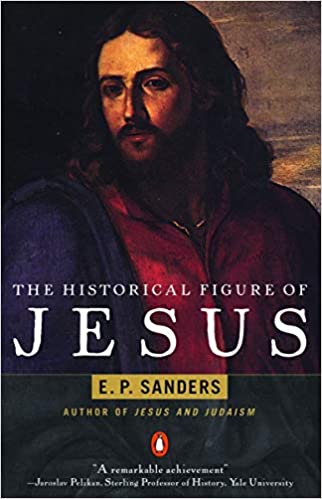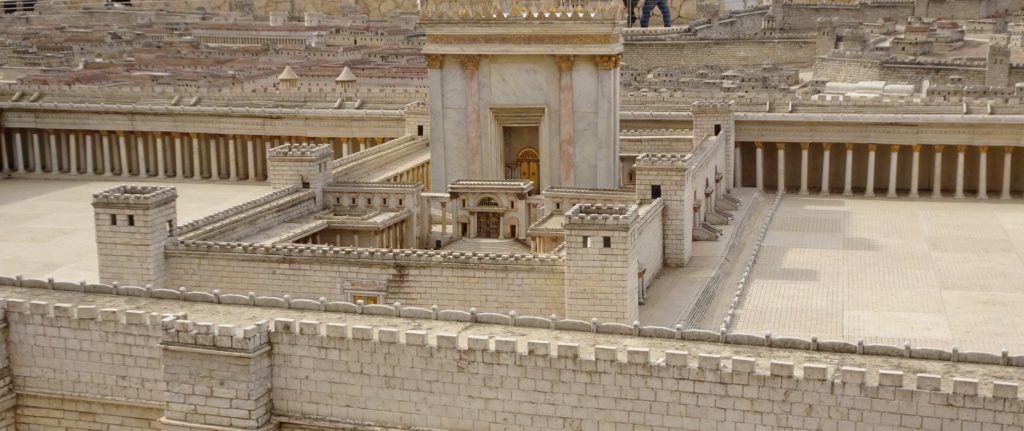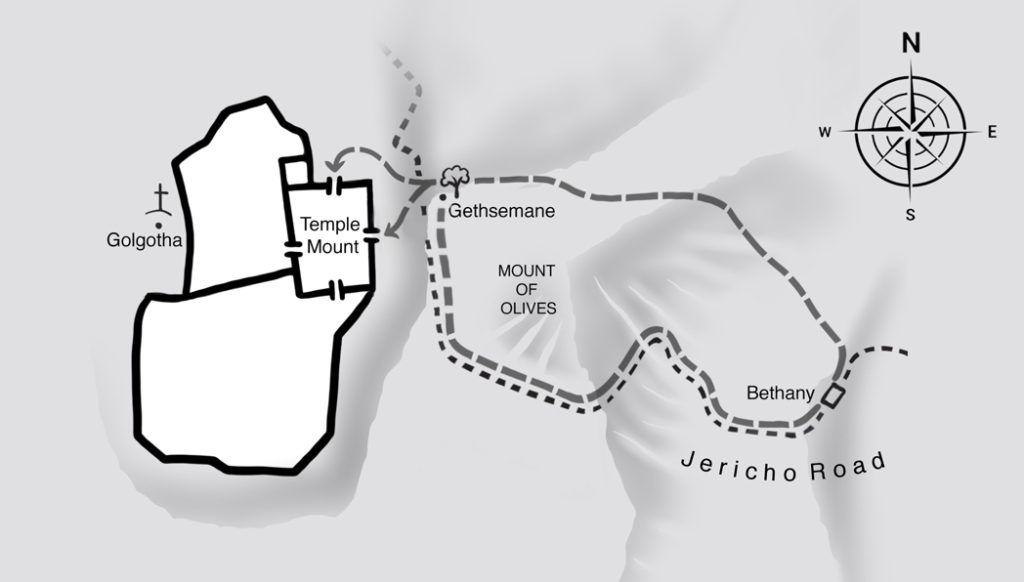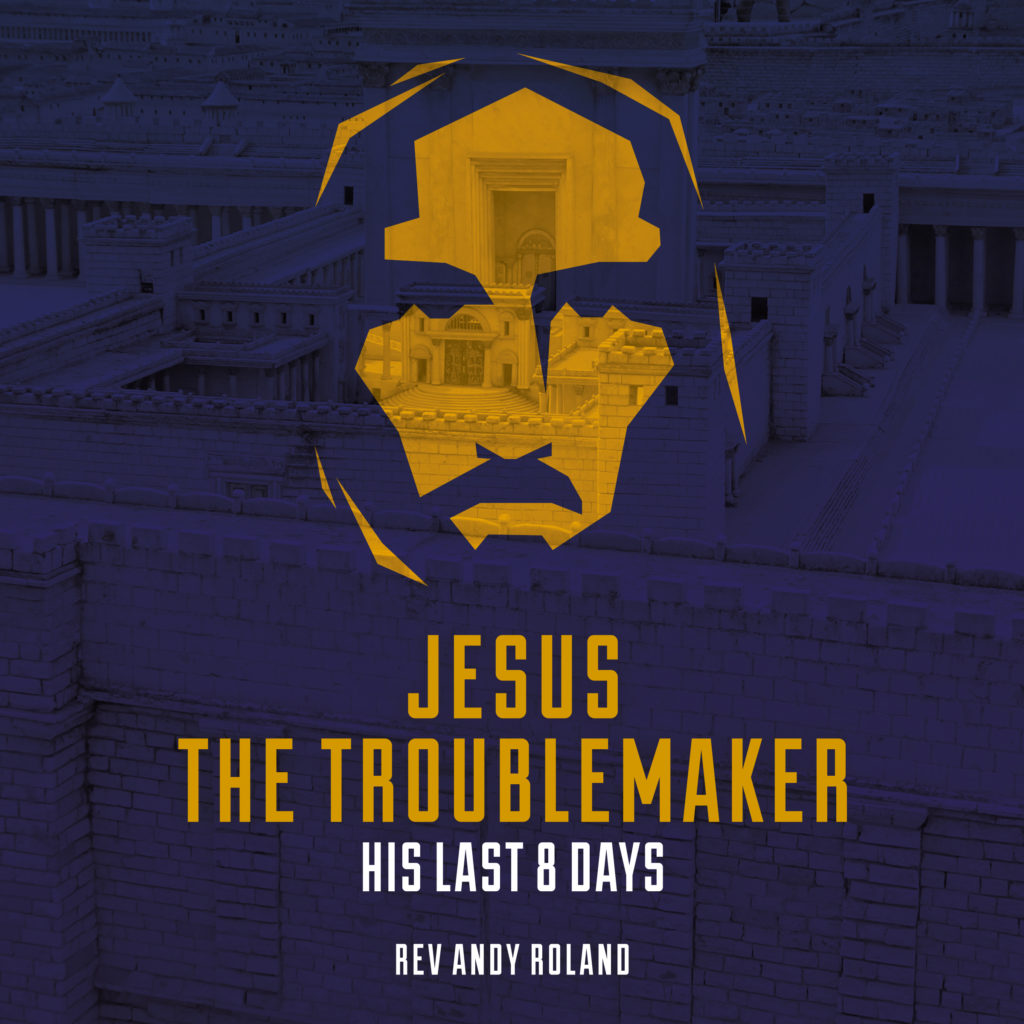
Proposition:
That Jesus had two quite separate groups of disciples, those based in Galilee and those living in and around Jerusalem.
1 Scholarly minimalism
Professor E P Sanders is a noted Jewish New Testament scholar. His book ‘The Historical Figure of Jesus’ has many enlightening comments. But he suffers from what I call ‘scholarly minimalism’, i.e. the reduction of the gospels’ narratives to as small and unimpressive scale as possible. Because the first three gospels mention only one Passover, he guesses that Jesus’ ministry may only have lasted a year: ‘he still would have had one winter to get through’ (p.110). So presumably all of his supporters would have been from Galilee. My contention is that Jesus made several visits to Jerusalem over some years – traditionally three, though it could have been two, three or four years. [The most serious blemish in Sanders’ work is his failure to take account of Mark’s vital detail: ‘He would not allow anyone not carry any trade goods (Greek: vessels) through the temple.’ (Mark 11.16). I.e. Jesus did not just perform a prophetic action (Sanders p.254f), it was an occupation – over several days.]
2 Geography and Time
As I write, my wife is about to visit her parents in Plymouth for the weekend. Two hundred years ago that would have been impossible. For Jesus, any visit to Jerusalem would have involved a 160 mile round trip, walking: a week to get there, probably two weeks to stay there and a week to walk back. If he went up for the three major festivals, that would consume three month of the year. Hannukah (John 10.22) would make a fourth. If Jesus wanted a break from his ministry in Galilee, it was quicker to go north, either to Caesarea Philippi or the neighbourhood of Tyre (Mark 8.27, 7.24).
If he was in Jerusalem and needed to go somewhere not as far as Galilee, he would walk for a day or two across the Jordan (John 10.40), or to a town near the wilderness of Judaea, Ephraim (John 11.54).

3 Secret supporters
It is clear from the first three gospels that Jesus had a network of secret supporters about whom his Galilean followers, and specifically the Twelve, knew nothing.
‘Jesus sent two of his disciples and said to them, ‘Go into the village ahead of you, and immediately as you enter it, you will find tied there a colt that has never been ridden; untie it and bring it. If anyone says to you, “Why are you doing this?” just say this, “The Lord needs it and will send it back here immediately.” ’ They went away and found a colt tied near a door, outside in the street. As they were untying it, some of the bystanders said to them, ‘What are you doing, untying the colt?’ They told them what Jesus had said; and they allowed them to take it.’ (Mark 11.1-6)
Clearly someone had told some people to keep an eye on the colt, and only let the person have it if they gave the right password.
‘Jesus sent two of his disciples, saying to them, ‘Go into the city, and a man carrying a jar of water will meet you; follow him, and wherever he enters, say to the owner of the house, “The Teacher asks, Where is my guest room where I may eat the Passover with my disciples?”’ (Mark 14.13-14)
Was the man carrying a jar of water a secret disciple? Perhaps. The owner of the house certainly was. And was the owner Mary, mother of John Mark, a main meeting place for the early church, as in Acts 12.12? Luke tells us that 120 of Jesus’ followers met in an upper room in the city (Acts 1.13, 15). The same house?
So at the very least we have three locations where Jesus had supporters, the house of Mary, mother of John Mark, in the city, someone in Bethphage, and possibly two houses in Bethany, that of Lazarus and his sister and the one belonging to Simon the Leper (Mark 14.3). He also had supporters beyond the Jordan, and at Ephraim near the wilderness.
Most of these were not known to Jesus’ inner circle from Galilee.

4 John the Evangelist
Finally there is the gospel of John. Nowhere in the gospel is the name John used. Traditionally it has been assumed that the name John refers to John son of Zebedee, one of Jesus’ earliest followers in Galilee. But that makes it very hard to explain why, apart from chapter 6 and the appendix in chapter 21, only 22 verses take place in Galilee. I am persuaded that the ‘beloved disciple’ was in fact a Jerusalem disciple with the common name of John, or Yochanan. I found the arguments of Richard Baukham in ‘Testimony of the Beloved Disciple’ persuasive. (The other disciple whom we are told Jesus loved was also from the Jerusalem area, Lazarus of Bethany). That will give us at least one more household in the city where supporters of Jesus lived.
5 The Gospel of John
Other Jerusalem or Judaean supporters could be Nathaniel “Can anything good come out of Nazareth?” (John 1.46); Nicodemus (3.1-10); the crowd: Many in the crowd believed in him and were saying, ‘When the Messiah comes, will he do more signs than this man has done?’ ‘Some in the crowd said, ‘This is really the prophet.’ Others said, ‘This is the Messiah.’(John 7.31, 40); the man born blind: He said, ‘Lord, I believe.’ And he worshipped him (9.38), Joseph of Arimathea (19.38). The total of people identified as Jerusalem disciples could come to eight, with more in the crowd. The tip of the iceberg?
6 Why the secrecy?
The Sanhedrin and ruling families in the Temple we a much more serious threat to any new movement than the relatively relaxed rule of Herod Antipas in Galilee. Sanders makes it clear that even when Judaea was formally under ‘direct’ Roman rule, the Jewish leaders were in day-to-day control (p.26). Jerusalem was policed by thousands of temple guards with their truncheons.. In his ‘Life of Yohanan ben Zakkai’, Neusner quotes this poem about the Sadducees: ‘They are high priests … and their slaves beat the folk with sticks.’ (p.36)
Within a year or so of Jesus death and resurrection, Saul of Tarsus was entering house after house; he dragged off men and women and committed them to prison.” This was only because he had the Sanhedrin’s authority to do this. So keeping your head down was the smart thing to do. It makes Joseph of Arimathea’s public burial of Jesus all the more courageous.

7 Judas Iscariot
What was the reaction of the Galilean disciples, specifically the Twelve? Nobody likes to feel they have been left out of the loop. And they easily slipped into jealousy, viz. their reaction to the attempt by the sons of Zebedee to secure the top spots in the coming kingdom: When the ten heard this, they began to be angry with James and John. (Mark 10.41).
I assume that Judas son of Simon Iscariot, or rather Y’hudah bar-Shim’on Ish-K’riot, was from the town of Kerioth, in present day Jordan. So he was a real outsider, neither from Galilee nor from Judaea. In my book ‘Jesus the Troublemaker’ I guess that it was Judas’ jealousy of Jesus’ network of secret disciples that triggered his act of betrayal (p.80-81). Just a possibility.
Comments please!
Do email me any comments your have on the above. New ideas welcome!
JESUS IS COMING!
The audiobook of ‘Jesus the Troublemaker – his last eight days’ is about to go LIVE!
Check it out on Amazon/Audible!

